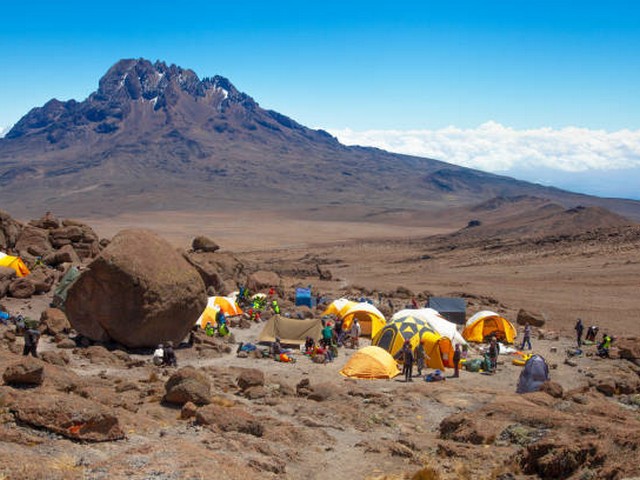Conquering Kilimanjaro: Navigating Common Health Risks with Confidence
Standing majestically as Africa's highest peak, Mount Kilimanjaro beckons adventurers from across the globe to its snow-capped summit. The journey to its peak, though awe-inspiring, brings with it inherent health risks that every trekker should be aware of. At the Kilimanjaro Centre for Trekking and Ecotourism (KCTE), we believe knowledge is as crucial as your hiking boots when tackling such an epic adventure. In this detailed guide, we'll explore the common health risks during Kilimanjaro trekking and how you can conquer them with confidence.
Preparing Your Body and Mind: The Key to a Successful Climb
Altitude Sickness: The Invisible Challenger
Climbing Mount Kilimanjaro exposes trekkers to the risk of altitude sickness, a condition triggered by reduced air pressure and lower oxygen levels at high altitudes. Symptoms can range from headaches and dizziness to more severe forms like High Altitude Pulmonary Edema (HAPE) and High Altitude Cerebral Edema (HACE).
Prevention and Management:
- Acclimatization: Spend a few days at a moderately high altitude to help your body adjust.
- Pace Yourself: Ascend gradually to give your body time to adapt.
- Hydration: Drink plenty of water to maintain hydration.
Hydration and Nutrition: Fueling the Ascent
Dehydration and malnutrition can sneak up on even the most experienced trekkers, especially as physical exertion increases under less than ideal conditions.
Staying Hydrated and Well-fed:
- Water Intake: Aim for 3-4 liters per day, adjusting as needed based on activity level and sweat loss.
- Balanced Meals: Our KCTE guides ensure your diet is rich in carbohydrates, proteins, and fats, which are crucial for sustaining energy levels.
Monitoring Environmental Challenges
Cold Exposure: Warding Off the Chill
Temperatures on Kilimanjaro can plummet to -20°C at higher altitudes, posing risks such as hypothermia and frostbite.
- Layer Up: Wear multiple layers of clothing that can be adjusted with changing temperatures.
- Protect Extremities: Use quality gloves, hats, and boots.
Sun Exposure: The Deceptive Foe
The intensity of UV rays increases significantly as altitude does, raising the risk of sunburns and related skin damages.
Protection Strategies:
- Sunscreen: Apply and reapply high-SPF sunscreen regularly.
- Protective Clothing: Long sleeves, wide-brimmed hats, and UV-protective sunglasses are essential.
Trek Smart: Tips and Techniques for a Safe Climb
Know Your Body: Listening to What It Tells You
Recognizing the early signs of potential health issues can make all the difference. Fatigue, irregular breathing, and persistent discomfort should not be ignored.
Responsive Measures:
- Rest: Take breaks and maintain a manageable pace.
- Consult: Always communicate with your KCTE guide about any concerns.
Training and Fitness: Pre-Climb Preparation
Adequate physical preparation can not only enhance your climbing experience but also mitigate health risks.
Effective Training Tips:
- Cardiovascular Exercises: Improve your endurance with activities like running, cycling, or swimming.
- Strength Training: Focus on building leg strength and core stability to cope with the trek's demands.
Why Choose KCTE for Your Kilimanjaro Adventure?
At KCTE, your safety and enjoyment are paramount. Our expert guides are trained to handle altitude-related challenges and are equipped with medical supplies and evacuation plans to respond swiftly to emergencies. We emphasize environmental understanding and personal preparedness, making sure you're well-informed and ready to face the mountain's challenges.
Conclusion: Your Gateway to the Roof of Africa Awaits
Embarking on a Kilimanjaro trek is no ordinary feat; it's a journey that tests your limits and expands your horizons. Understanding and preparing for the common health risks is your first step towards a successful and memorable climb. With the right preparation and the experienced team at KCTE, you're set to conquer not just Kilimanjaro, but also the challenges you face along the way.
Are you ready to stand atop Africa, surrounded by the clouds, with a sense of accomplishment that's as vast as the landscape before you? Book your climb with Kilimanjaro Centre for Trekking and Ecotourism (KCTE) today, and let us guide you to the summit safely and inspiringly.
Frequently Asked Questions
Q: How long does it take to acclimatize properly?
A: Acclimatization varies by individual, but typically, spending an extra day or two at an altitude of around 2,500 to 3,000 meters helps most trekkers adjust adequately.
Q: What is the best time of year to climb Kilimanjaro?
A: The best times are during the dry seasons, from late June to October and from late December to early March.
Q: Can beginners climb Mount Kilimanjaro?
A: Yes, Kilimanjaro is climbable by beginners who are in good health, properly prepared, and accompanied by experienced guides like those from KCTE.
Q: What should I pack for a Kilimanjaro trek?
A: Essential items include thermal layers, a sturdy pair of boots, a sleeping bag rated for low temperatures, a hydration pack, and personal medication.
Q: How do KCTE guides assist with health risks?
A: KCTE guides are trained in first aid and acute mountain sickness (AMS) recognition, equipped to perform health checks, manage minor ailments, and execute emergency evacuations if necessary.
Take the first step on your Kilimanjaro journey with KCTE, where adventures are tailor-made and dreams soar as high as the peak we aim to conquer together.




